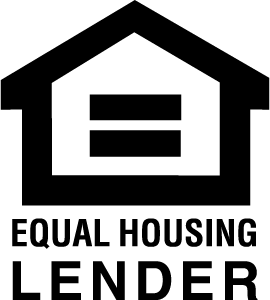
Our local real estate market has fluctuated from a buyers’ market to a sellers’ market over the last few years, but recent reports show that it’s a great time to buy. Who is really at an advantage when it comes to Minnesota and western Wisconsin real estate?
Inventory
The number of homes on the market, or inventory, is a critical element to determining who holds the advantage in the housing market. Think of the simple economics of supply and demand: when there are fewer homes for sale (low supply), the demand grows because buyers are forced to compete. In times of high demand, sellers can often get a higher price, either by increasing their asking price or receiving multiple offers. Conversely, if supply is high — i.e., there are too many homes for sale — then demand drops and so do home prices.
The months’ supply of inventory is the number of months it would take for all current homes on the market to sell at today’s current sales pace. When this number is above six months, it is considered a buyers’ market. Right now, in our 13-county metro area, the months’ supply of inventory sits at 4.1 months (Northstar MLS). This means we are definitively in a sellers’ market when it comes to inventory. However, the supply has been on the rise for the last few months and the spring market is expected to bring an influx of sellers.
Inventory shows: A sellers’ market
Median sale prices
As we mentioned, low prices are a clear sign of a buyers’ market. From this perspective, the best recent buyers’ market was in February 2012, when the median home price was just $165,308 in our area. Since then, we have seen 34 months of consecutive, year-over-year price gains; our current median sales price is $224,900. (Northstar MLS).
We’ve seen nearly three years of increased prices, so it’s true that prices are also showing a sellers’ market in our local area. However, we have seen slowed growth in prices over the last few months, which means that the market is balancing out. If the spring market brings a major increase in inventory, we could see more tempered price growth.
Sales price numbers show: A sellers’ market, but with slowing price increases
Should buyers wait?
Both our current inventory and our current prices show that it’s a sellers’ market. Does that mean buyers should wait to purchase a home? No, not necessarily. While sellers have the advantage, here are a few conditions that are making it a great time for buyers.
Low rates
Interest rates have been kept intentionally low over the last few years to increase the buying power of today’s potential homeowners. Now, many experts — including Edina Realty president Barb Jandric — expect rates to slowly increase this year, maybe up to 5 percent. As we’ve noted before, an increase of even 1 percent over today’s interest rates could mean a 10-11 percent decrease in buying power.
In short, buyers who move now can take advantage of the lowest rates we’ve seen since May 2013, while those who wait may secure a higher interest rate.
Low down payment options and lower FHA fees
First-time buyers rejoiced in early December 2014, when Fannie Mae and Freddie Mac announced they would begin backing loans with as little as 3 percent down. Fannie Mae began backing the loans in mid-December and Freddie Mac will follow suit on March 23, 2015.
While each loan is processed individually, these new loan options generally require the borrower to purchase private mortgage insurance, have a credit score of at least 620 and to undergo homeownership counseling. Additionally, the borrower will have to provide income documentation, proof of job history and other financial statements.
The new loan options will increase loan access to first-time buyers and younger buyers who earn enough for a monthly mortgage payment, but haven’t been able to save the large sum needed for a down payment.
Another win for first-time homebuyers: the Federal Housing Administration recently reduced annual mortgage insurance premiums by 50 basis points, from 1.35 percent to 0.85 percent. This will make homeownership more affordable and attainable for credit-worthy buyers.
A lack of investors
One sign of a buyers’ market is an influx of investors, who buy up cheap properties they plan to rent or re-sell for a higher value. A few years ago, when foreclosures and short sales comprised more than 40 percent of homes for sale in the 13-county metro area, investors were outbidding traditional homebuyers, making it difficult for non-investors to take advantage of the discount market (Northstar MLS).
Now that prices have been on the rise for nearly three years, most investors have left the market. That means that while some neighborhoods with low inventory may see multiple offers, buyers will likely be on an even playing field with their competitors.
The verdict
The market still holds an advantage for sellers, but as price gains slow and inventory increases, we may reach a balance with the spring market. While buyers won’t see the bargains of 2011 for a long time, they can take advantage of low interest rates, new 3 percent down payment options, reduced mortgage insurance premiums and a lack of investors to drive up their buying power.
Thinking of buying or selling this spring? Call, email or chat to be put in touch with one of our 2,300 local real estate experts.









 ©2025 Prosperity Home Mortgage LLC®. (877) 275-1762. 3060 Williams Drive, Suite 600, Fairfax, VA 22031. All first mortgage products are provided by Prosperity Home Mortgage, LLC®. Not all mortgage products may be available in all areas. Not all borrowers will qualify. NMLS ID #75164 (For licensing information go to: NMLS Consumer Access at
©2025 Prosperity Home Mortgage LLC®. (877) 275-1762. 3060 Williams Drive, Suite 600, Fairfax, VA 22031. All first mortgage products are provided by Prosperity Home Mortgage, LLC®. Not all mortgage products may be available in all areas. Not all borrowers will qualify. NMLS ID #75164 (For licensing information go to: NMLS Consumer Access at